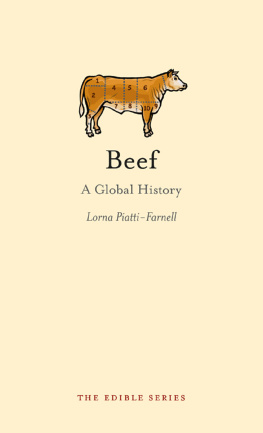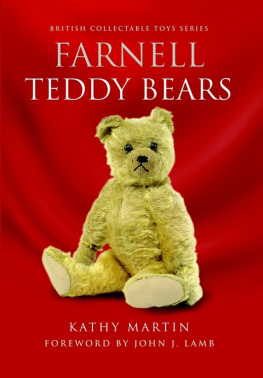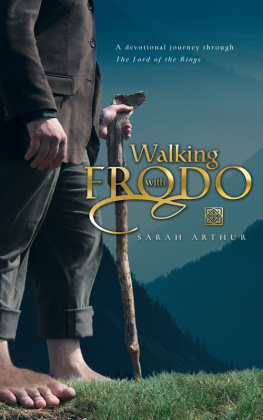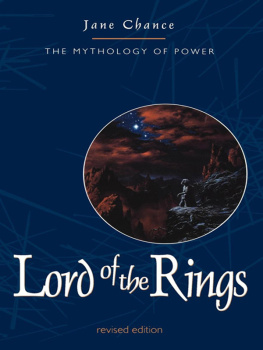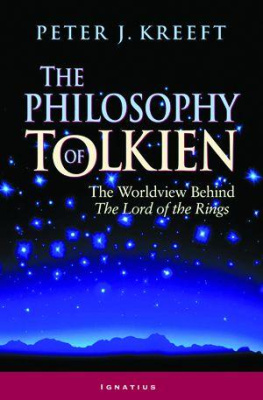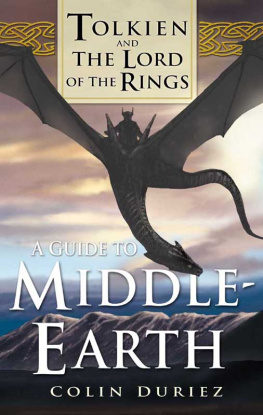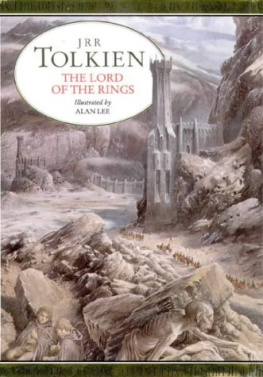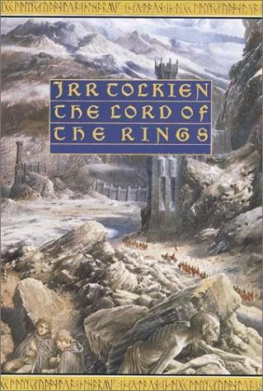Credits
First published in the UK in 2015 by Intellect Books, The Mill, Parnall Road, Fishponds, Bristol, BS16 3JG, UK
First published in the USA in 2015 by Intellect Books, The University of Chicago Press, 1427 E. 60th Street, Chicago, IL 60637, USA
Copyright 2015 Intellect Ltd
Editor: Lorna Piatti-Farnell
Series Editor and Design: Gabriel Solomons
Typesetting: Stephanie Sarlos
Copy Editor: Emma Rhys
All rights reserved. No part of this publication may be reproduced, stored in a retrieval system, or transmitted, in any form or by any means, electronic, mechanical, photocopying, recording, or otherwise, without written consent.
A catalogue record for this book is available from the British Library
Fan Phenomena Series
ISSN: 2051-4468
eISSN: 2051-4476
Fan Phenomena: The Lord of the Rings
ISBN: 978-1-78320-515-8
eISBN: 978-1-78320-516-5
Printed and bound by
Bell & Bain Limited, Glasgow
Lorna Piatti-Farnell
 Over the decades, J. R. R. Tolkiens The Lord of the Rings (195455) has established its position in the readers minds as the quintessential fantasy narrative (Walters 3). Together with their predecessor The Hobbit (1937), the books have gathered an impressive fandom following, and continued to enjoy immense popularity in the wider cultural scope.
Over the decades, J. R. R. Tolkiens The Lord of the Rings (195455) has established its position in the readers minds as the quintessential fantasy narrative (Walters 3). Together with their predecessor The Hobbit (1937), the books have gathered an impressive fandom following, and continued to enjoy immense popularity in the wider cultural scope.Ever since Peter Jackson first released his film adaptations of Tolkiens beloved books, The Lord of the Rings film trilogy (2001, 2002, 2003) has also become a household name in the world of fandom, as well as an utterly unavoidable example of fantasy cinema.
Winner of multiple awards including many Academy Awards The Lord of the Rings trilogy is a real popular culture icon. The trilogy is now, arguably, one of the most recognizable cinematic series in the world; Jacksons films have catapulted The Lord of the Rings narratives to the mainstream, and there are probably very few people who do not know what a hobbit or an orc is.
From the early days of the trilogys success, director Peter Jackson showed a clear desire and sophisticated ability to capture the attention of potential fans: mixing technology with a pre-established interest in the subject, Jackson took advantage of the power of the Internet to engage existing fans of Tolkiens books and whet their appetite for the films as well as to recruit potential new followers for the narrative. Jacksons involvement with important online sources such as TheOneRing.net opened immense possibilities for the reach of the film trilogy by capitalizing on active and participatory fans (see Jenkins), who often feel a sense of ownership for the final product, and perceive they should have a say in the creative development of the Tolkien universe. Over the years, multiple websites have provided a venue for fans to maintain clear and live connections with the films as a developing franchise, as well as their production, circulation, and reception. The very term fan here is taken to mean both readers and viewers who display a deep connection with the product, and feel they are invested in ways that go beyond casual watching, even if those causal watchers like the movies very much. The fans of the rings do not simply like The Lord of the Rings often affectionately known as LOTR: they show a desire to be involved, to comment, to speculate, and, given the opportunity, to become part of the narrative of Middle-earth.
It is no longer a surprise to hear of the reimagining of the stunning landscape of New Zealand Jacksons home country and where the trilogy was filmed as Middle-earth. The unavoidable shots of New Zealands impressive mountains, streams and green lands were a memorable point of difference for Jacksons films, and a general sense of acceptance surrounds the idea that, as far as the cinematic version of the narrative is concerned, New Zealand is Middle-earth. Heavy marketing campaigns and the establishment of location tours have cemented the place occupied by the country in not only the fans psyche, but also the collective imagination (Carl, Kindon and Smith; Jones and Smith). The fans love for LOTR often overspills into obsession, as the desire to relive the fantastic narratives of Middle-earth, and feel part of the rings, moves followers to extend the experience of the films into other areas of their everyday life. Naturally, this aided the construction of not only TheLord of the Rings trilogy as a cinematic phenomenon, but also as a cultural circle with its own distinct fan phenomena.

And while the recent Hobbit films (Peter Jackson, 2012, 2013, 2014) have generally failed to generate such devoted fan-interest, TheLord of the Rings trilogy continues to appeal. From fanfiction to fan-made movies, location tours of Hobbiton and celebrity worshipping, the devoted fans of the trilogy do it all. It is therefore important to address the reach of The Lord of the Rings not only the books, but most noticeably their cinematic counterparts in the world of fandom, and assess its effects on the viewers and their ways of life. Fan Phenomena: The Lord of the Rings does precisely this: it delves into the philosophy of the fans of the rings, and explores the multifaceted nuances of the LOTR fan community, as preoccupations with genre, stardom, and authenticity are thrown into sharp relief.
The first chapter of the collection, Making Fantasy Matter: The Lord of the Rings and the Legitimization of Fantasy Cinema by Alexander Sergeant, sets the scene for understanding Peter Jacksons trilogy as part of fantasy cinema, and validating its value as a visual medium. Sergeant explores how The Lord of the Rings did not simply remind viewers that fantasy existed, but also proved that the genre can be treated just as seriously as any other popular form of film-making. Chapter 2, The Lord of the Rings: One Digital Fandom to Initiate Them All by Maggie Parke, explores the activities of the film-makers of The Lord of the Rings, and their interactions with their fans. Parke sees creators of the trilogy as pioneers into the complex realm of the management of event films and their fan bases, with a particular emphasis on digital platforms.

In Chapter 3, Reforging the Rings: Fan Edits and the Cinematic Middle-earth, Joshua Wille explores the popular practices of fans creating their own fan edits of LOTR narratives. Wille perceives fan edits as individual artistic expressions, articulations of personal readings, and a means for fans to manifest the movies they want to see. The expanding field of LOTR fan editing is providing appealing reinterpretations of a film series that epitomizes an already revisionist mode in contemporary cinema. In similar fashion, Chapter 4, Walking Between Two Lands, or How Double Canon Works in



 Over the decades, J. R. R. Tolkiens The Lord of the Rings (195455) has established its position in the readers minds as the quintessential fantasy narrative (Walters 3). Together with their predecessor The Hobbit (1937), the books have gathered an impressive fandom following, and continued to enjoy immense popularity in the wider cultural scope.
Over the decades, J. R. R. Tolkiens The Lord of the Rings (195455) has established its position in the readers minds as the quintessential fantasy narrative (Walters 3). Together with their predecessor The Hobbit (1937), the books have gathered an impressive fandom following, and continued to enjoy immense popularity in the wider cultural scope.



